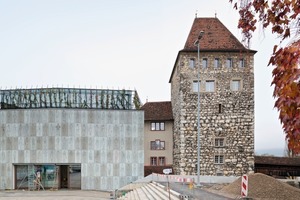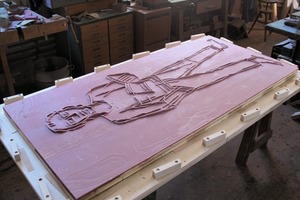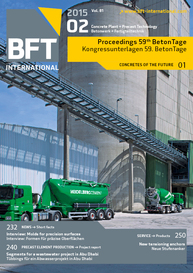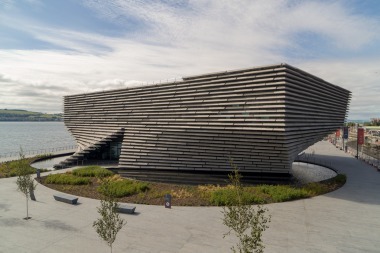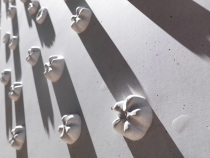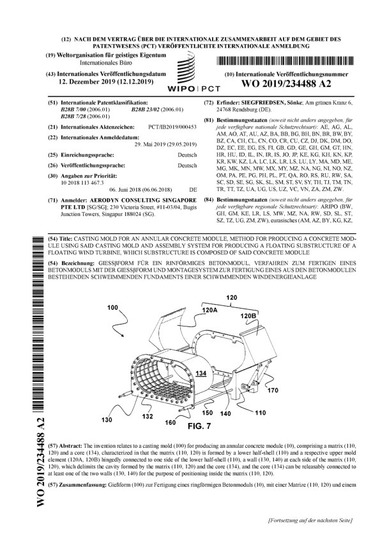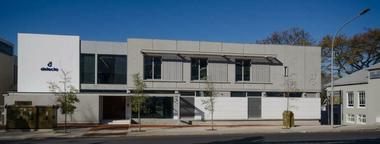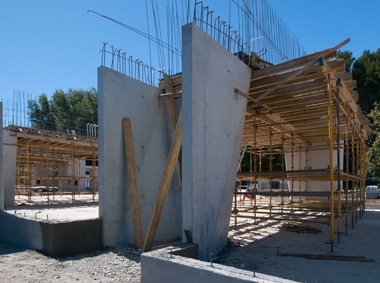“Human façade” made of 134 pieces of art in concrete
So far, the Town Museum of Aarau in Switzerland was housed in the historical Schlössli tower built in the 13th century. An extension, the structural rehabilitation of the existing building and a new museum concept were intended to turn the “Schlössli” into a modern town museum. The Basel-based architect’s office Diener und Diener under took over the management.
At the place of the new building there had been a 130-year old redwood tree, which had to be cut down. It was however intended to integrate this tree in some way or other in the new museum. With this objective in mind, the architect’s office Diener & Diener contacted the artist Josef Felix Müller living in St. Gallen, who then conceived the design of the new façade. He had the tree cut down processed to wooden plates. Afterwards he cut 134 different human silhouettes in the wooden plates with his motor saw. In this way, he created unique artworks, which were used as concrete formwork, thus being eternalized in the new building.
PUR casting resins for detailed molding
The textured formliners were manufactured by company Ingold G Technischer Modellbau, Olten (Switzerland). For casting the wooden artworks accurately in every detail, they used the flexible polyurethane casting resin type GM 955 – 40 of Ebalta. This casting resin has especially been designed for high demands in concrete molding. GM 955 – 40 was the right choice for the demanding project due to the excellent flow property and very good self-deaeration. The outcome was an exact reproduction of the designed original featuring accurately molded contours.
When the 134 textured formliners were successfully made, the next step was taken over by Stüssi Betonvorfabrikation AG, Dällikon (Schweiz), who were casting the concrete. Due to the very high accuracy of the textured formliners right down to the last detail, the wood structure of the redwood is still visible in the concrete panel. In this way, the tree stays alive at the town museum.
In the meantime, the concrete panels have been fixed to the façade. The observer gets the impression as looking at a picture as in an art gallery. The museum will be opened for the public in springtime 2015.
Ebalta Kunststoff GmbH is exhibiting at the 59th BetonTage congress held in Ulm. Further information on the project and the products is available at booth No. 118.

